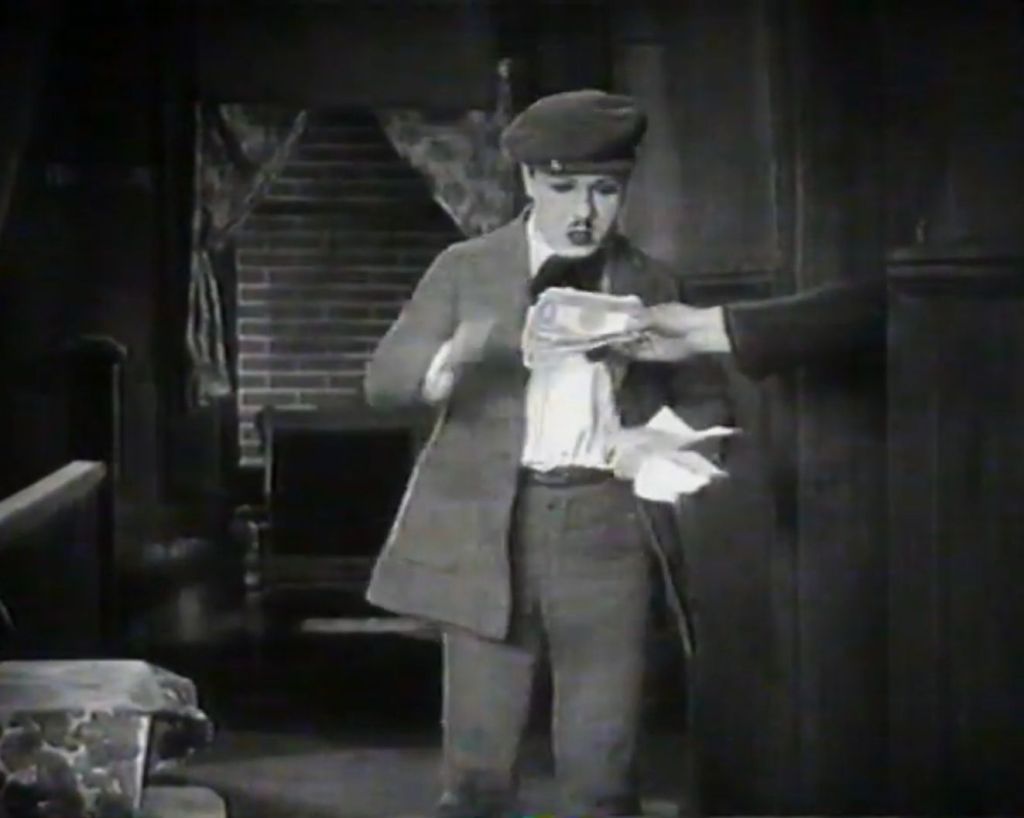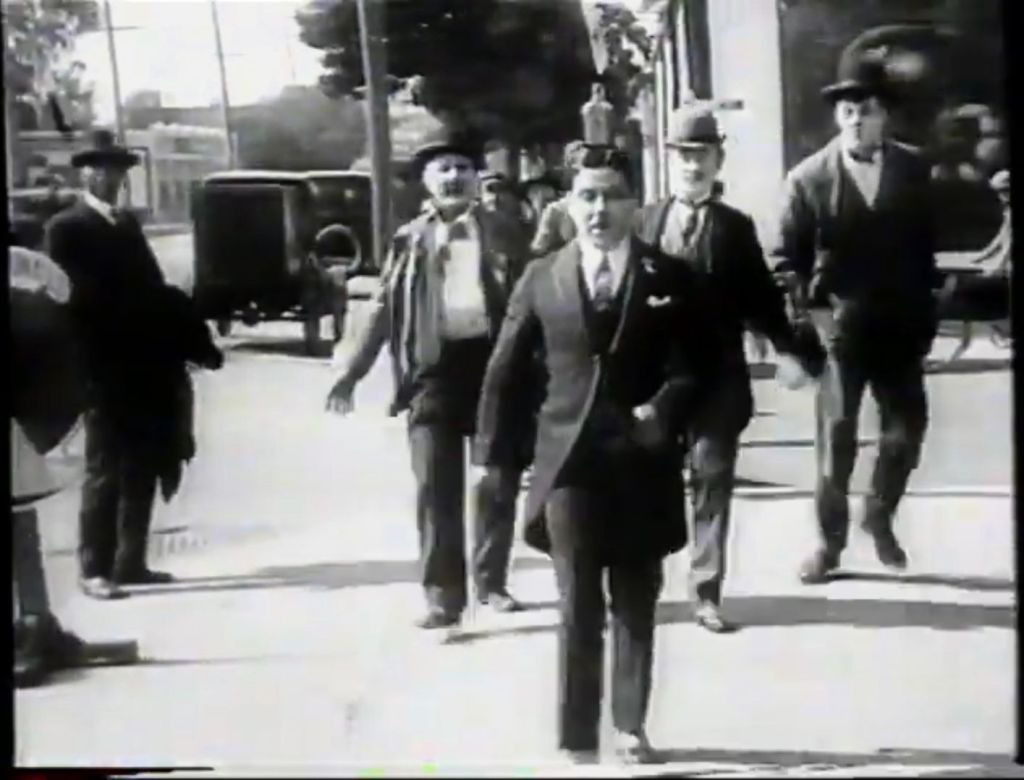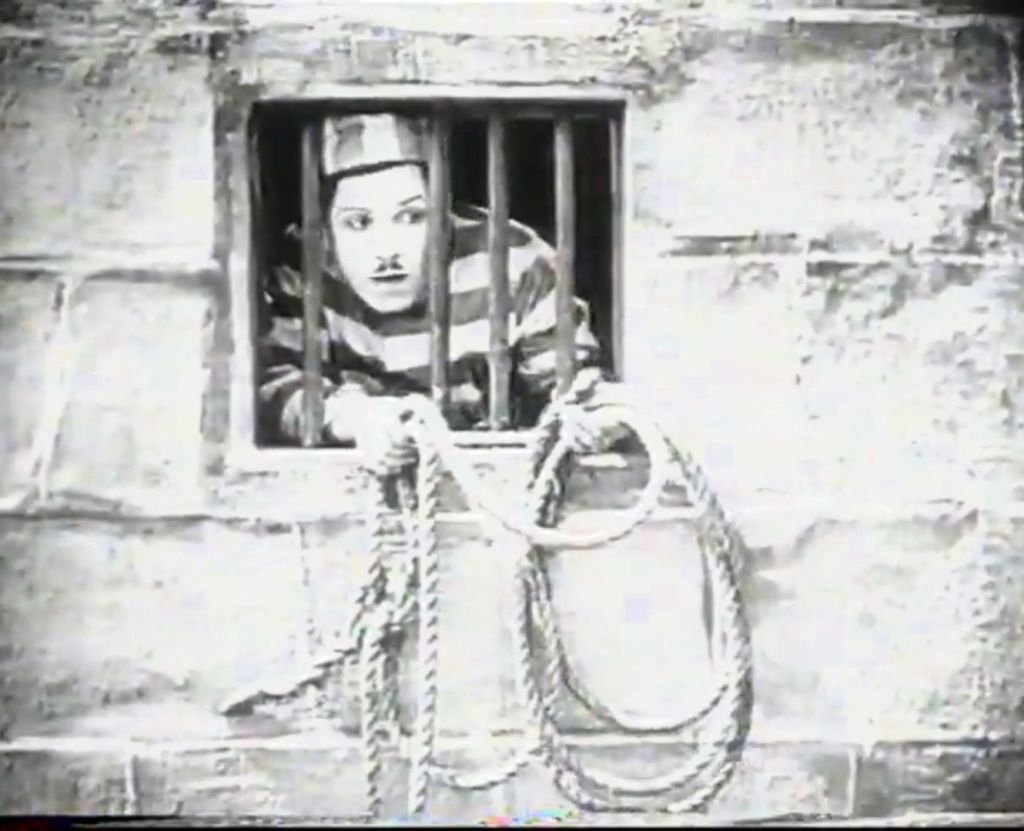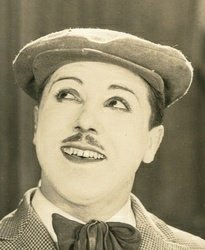I’m midway through writing notes for the films in the new Monty Banks Kickstarter BluRay. If you’ve signed up for this one, you’re in for an absolute treat – the films are great and look fantastic! Anyway, while looking up a few bits and pieces about our Monty, I stumbled on an intriguing YouTube video. It’s an archival Czech/Yugoslavian TV documentary dedicated to Monty, from a series called ABECEDERA HUMORU, which roughly translates as ‘The Alphabet of Humour’. It seems like each episode presents a spotlight on a particular vintage comedian, with highlights from their films presented, narrated GOLDEN SILENTS style.
The interest here is that the clips chosen are big chunks of some really rare Monty films! This episode features excerpts from some of his short films, none of which I’d seen before. Some of the Banks shorts are downright obscure, so these are my best guesses for identification (this book was a big help on a couple of the films!). I’d love to be corrected, so all you silent comedy scholars lurking out there, do please chime in…

The first clip is certainly from PEACEFUL ALLEY, which has been called Monty’s version of Chaplin’s EASY STREET. (There’s perhaps more overlap with Larry Semon’s own version, THE RENT COLLECTOR, though). Some good scenes here as Monty tries to collect debts from the tough tenants, led by his very own Eric Campbell-style heavy, William Blaisdell.
Following this is a sequence where Monty, en route to his wedding, accidentally (and unknowingly) comes into possession of some bootleg booze. I haven’t got a clue which film this is from, but it’s loads of fun!

Next up, there’s another scene that echoes Chaplin, namely his ballet in SUNNYSIDE, as Monty frolics, Pan-like with some girls. This turns out to be a dream, and he’s rudely awakened in his prison cell, where an escape is in progress. He makes it out, and the rest is a series of fun chase gags, including a great one where Monty, in his prison garb, disguises himself against a striped tent. This film is SQUIRREL FOOD, from 1922. Incidentally, the lanky prison guard among his pursuants has been identified as Teddy Jefferson, younger brother of Stan Laurel.

A sequence featuring Monty trying to sneak in to a harem to rescue his girl from the clutches of a sheikh (Bill Blaisdell once more). It’s reminiscent of Lupino Lane’s MAID IN MOROCCO (though that film came after this one) I wonder if this might be EAST IS WORST? (1922)
The last section is a wonderful little sequence of Monty trying to duck out of his apartment without paying his rent, then trying to evade a cop (you giessed it, Bill Blaisdell again). The more I see of Monty’s films, the more impressed I am at his ability to milk a gag to produce really well-structured comedy sequences, and this is a great example. I wonder if this might be from RENT DAY? (1922).
Here’s the video – enjoy some vintage, very rare Monty Banks!
Now, where did they get these clips and whatever happened to the original films? Perhaps they’re from the Czech archive, which definitely has some interesting silent comedies. I wonder if any more episodes from the series are out there. This opening credit sequence features shots of Larry Semon and Lupino Lane, among others. Who knows what rare gems might have been showcased in their episodes…?

 There was no-one else in silent comedy quite like Raymond Griffith. He certainly bore very little stylistic similarity to Chaplin, Keaton or Lloyd. His closest evolutionary relative was probably Max Linder, with whom he shared a suave sophistication and silk-hatted swagger. Try saying that with a lisp.
There was no-one else in silent comedy quite like Raymond Griffith. He certainly bore very little stylistic similarity to Chaplin, Keaton or Lloyd. His closest evolutionary relative was probably Max Linder, with whom he shared a suave sophistication and silk-hatted swagger. Try saying that with a lisp.

 CH’ and ‘POST MORTEMS’, which provided excuses for his voice, but clearly this could only go on for so long. His final role was wordless, as a dying soldier in ‘ALL QUIET ON THE WESTERN FRONT’. While his acting career may have been over, he remained busy as a producer for 20th Century Fox, passing away in 1957.
CH’ and ‘POST MORTEMS’, which provided excuses for his voice, but clearly this could only go on for so long. His final role was wordless, as a dying soldier in ‘ALL QUIET ON THE WESTERN FRONT’. While his acting career may have been over, he remained busy as a producer for 20th Century Fox, passing away in 1957.


